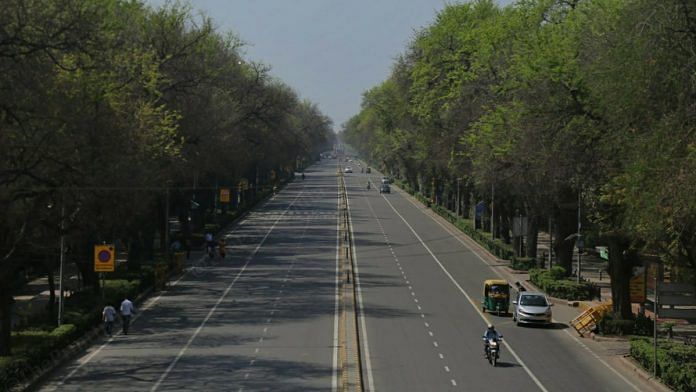For policy makers battling coronavirus disease Covid-19, whose epicenter is now in Europe, the choice has been stark. Economically painful national lockdowns threaten recession in the short term but ease the burden on health services. Softer, mitigating approaches let the infection run its course quicker but bring the risk of more people dying.
More countries are following the stricter so-called suppression route, understandably spooked by the rising tally of cases and reassured by China’s successful track record in using the strategy. Some 2.6 billion people across the world are under some form of movement restriction due to the coronavirus pandemic, according to AFP. Notable skeptic U.S. President Donald Trump has tweeted that he’s more worried about the cure being worse than the disease — the International Monetary Fund says the world will be in recession this year — but he’s increasingly alone. Even the U.K. has now imposed a lockdown, with very un-British police enforcement.
Still, suppression only buys time and is not an end in itself, and the economic and political costs involved raise a host of dilemmas for countries that have never imposed such draconian measures during peacetime. New data suggest the euro-area economy is already being battered, with Germany’s struggling manufacturing industry slipping deeper into recession and France’s registering sharp declines. Are there ways to ease the burden on the economy, even at the margin? Who should be forced to go out and work at a time when even jogging in the park is heavily policed for safety reasons? And what if lockdowns have to last longer than we think? France and Spain have extended theirs; Italy has tightened its measures further. The outlook is unclear.
France offers an instructive example. Like other European leaders, President Emmanuel Macron has rightly pledged fiscal stimulus plans worth around 2% of gross domestic product and promised to do whatever it takes to offset the cost of a shutdown — echoing the “bazooka” backdrop of neighboring governments and central bankers. But one week on from having declared “war” on Covid-19, the pain has clearly exceeded the government’s worst nightmares. The industrial sector is running at about 25% of capacity, construction sites have fallen silent, and electricity consumption has fallen 20% — worse than the declines in Italy or Spain after one week of lockdown, according to French newspaper Les Echos.
That snail’s pace is more consistent with a GDP drop of some 7%, according to Natixis economist Patrick Artus. Even a scaled-up bazooka couldn’t quickly rebuild what risks resembling a bombed-out economy after waves of potential layoffs.
One way to ease the pain is getting more people back to work, even if there’s not much consumer demand for their wares. But exhorting people simply to “keep working,” as Macron has done — or commanding key workers into battle while others stay home, as Boris Johnson has done — isn’t going to cut it. Picking and choosing between essential or non-essential sectors ignores the integrated nature of supply chains. And people who don’t have the luxury of being able to work from home — those who power factories, construction sites and the gig economy workers — are understandably worried about their health; they feel they’re being pressured to flout social-distancing rules for the sake of the economy. The last thing France needs now is the prospect of a labor-relations battle, or a strike threat as currently seen in Italy, following on the heels of the drawn-out Gilets Jaunes and pension reform protests.
Also read: Coronavirus lockdown: What states are doing to help the poor and unorganised workers
To balance these pressures, there should be a sector-by-sector approach to see how factories, construction sites and offices can be re-tooled in an era of strict social distancing, along with a ramp-up in resources like masks and medical equipment. The overstretched health-care sector is obviously top of the list, but this is starting to happen in other areas in France too: Construction sites are redesigning their teams in order to avoid people sharing vehicles or working too close to each other. Other nudges include bonus checks for those still working, who are often among the least well paid in society. Several supermarket chains in France are offering 1,000-euro bonuses to their cashiers and shelf-stockers.
If this is a war effort, there also needs to be more solidarity on the home front. Big companies should be prodded to help keep their small-business suppliers afloat. Morale won’t be boosted if there’s a sense that large firms are riding out the pain at others’ expense. And governments should keep an eye on the technology and gig economy players that are emerging as key to keeping basic services flowing — the likes of Amazon.com Inc., Uber Technologies Inc. and Deliveroo — to make sure their workers have the protections and safety net they deserve.
These short-term fixes will also need to be accompanied with medium-term plans to bridge the gap between a lockdown — which realistically should only have a life span of a few months — and the deployment of a vaccine, which could take a year. For example, young people could be sent back to work first to keep at-risk populations home. But that will require far more testing than is currently being done, to know who has caught and recovered from Covid-19 and who hasn’t. Testing, tracing and quarantining, as practiced by South Korea, should be part of the longer-term fight.
Lockdowns “aren’t a panacea,” Macron is reported to have said this week, in response to demands for an even more draconian self-isolation regime. He’s right. All leaders should consider suppression as only part of the response, alongside allocating more resources to over-stretched hospitals, more economic protections for those on the home front, and more testing when restrictions are finally lifted. That will go a long way towards avoiding a cure that’s worse than the disease.-Bloomberg
Also read: Delhi, Gurugram police promise ‘seamless’ delivery from Amazon, Big Basket, Zomato, Flipkart



